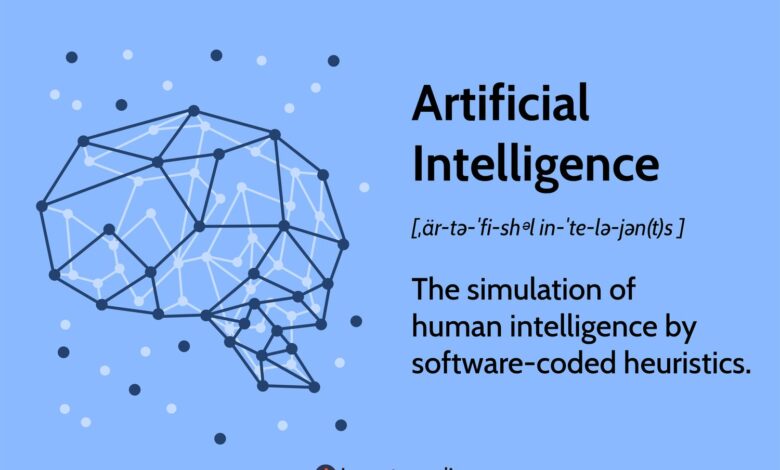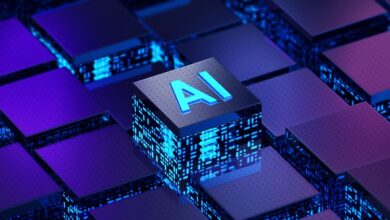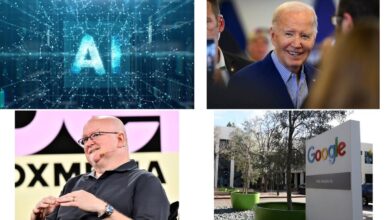What Is Artificial Intelligence (AI)?

What Is Artificial Intelligence (AI)?
Artificial intelligence (AI) technology allows computers and machines to simulate human intelligence and problem-solving tasks. The ideal characteristic of artificial intelligence is its ability to rationalize and take action to achieve a specific goal. AI research began in the 1950s and was used in the 1960s by the United States Department of Defense when it trained computers to mimic human reasoning.
A subset of artificial intelligence is machine learning (ML), a concept that computer programs can automatically learn from and adapt to new data without human assistance.
Key Takeaways
- Artificial intelligence technology allows computers and machines to simulate human intelligence and problem-solving capabilities.
- Algorithms are part of the structure of artificial intelligence, where simple algorithms are used in simple applications, while more complex ones help frame strong artificial intelligence.
- Artificial intelligence technology is apparent in computers that play chess, self-driving cars, and banking systems to detect fraudulent activity.
How Artificial Intelligence (AI) Works
Artificial intelligence commonly brought to mind the implementation of robots. As technology evolved, previous benchmarks that define artificial intelligence became outdated. Technologies that enable Artificial Intelligence include:
- Computer vision enables computers to identify objects and people in pictures and photos.
- Natural language processing (NLP) allows computers to understand human language.
- Graphical processing units are computer chips that help computers form graphics and images through mathematical calculations.
- The Internet of Things is the network of physical devices, vehicles, and other objects embedded with sensors, software, and network connectivity, that collect and share data.
- Application programming allows two or more computer programs or components to communicate with each other.
Algorithms often play a part in the structure of artificial intelligence, where simple algorithms are used in simple applications, while more complex ones help frame strong artificial intelligence.
Types of Artificial Intelligence
Narrow AI: Also known as Weak AI, this system is designed to carry out one particular job. Weak AI systems include video games like personal assistants like Amazon’s Alexa and Apple’s Siri. Users ask the assistant a question, and it answers it for you.
General AI: This type includes strong artificial intelligence systems that carry on the tasks considered to be human-like. They tend to be more complex and complicated and can be found in applications like self-driving cars or hospital operating rooms.
Super AI is a strictly theoretical type of AI and has not yet been realized. Super AI would think, reason, learn, and possess cognitive abilities that surpass those of human beings.
Using Artificial Intelligence
Artificial intelligence can be applied to many sectors and industries, including the healthcare industry for suggesting drug dosages, identifying treatments, and aiding in surgical procedures in the operating room.
Other examples of machines with artificial intelligence include computers that play chess and self-driving cars. AI has applications in the financial industry, where it detects and flags fraudulent banking activity. Applications for AI can help streamline and make trading easier.
In 2022, AI entered the mainstream with applications of Generative Pre-Training Transformer. The most popular applications are OpenAI’s DALL-E text-to-image tool and ChatGPT. According to a 2024 survey by Deloitte, 79% of respondents who are leaders in the AI industry, expect generative AI to transform their organizations by 2027.
What Is Reactive AI?
Reactive AI is a type of Narrow AI that uses algorithms to optimize outputs based on a set of inputs. Chess-playing AIs, for example, are reactive systems that optimize the best strategy to win the game. Reactive AI tends to be fairly static, unable to learn or adapt to novel situations.
What Are the Concerns Surrounding the Use of AI?
Many are concerned with how artificial intelligence may affect human employment. With many industries looking to automate certain jobs with intelligent machinery, there is a concern that employees would be pushed out of the workforce. Self-driving cars may remove the need for taxis and car-share programs, while manufacturers may easily replace human labor with machines, making people’s skills obsolete.
How Is AI Used in Healthcare?
In healthcare settings, AI is used to assist in diagnostics. AI can identify small anomalies in scans to better triangulate diagnoses from a patient’s symptoms and vitals. AI can classify patients, maintain and track medical records, and deal with health insurance claims.
The Bottom Line
Artificial Intelligence (AI) is an evolving technology that tries to simulate human intelligence using machines. AI encompasses various subfields, including machine learning (ML) and deep learning, which allow systems to learn and adapt in novel ways from training data. It has vast applications across multiple industries, such as healthcare, finance, and transportation. While AI offers significant advancements, it also raises ethical, privacy, and employment concerns.



